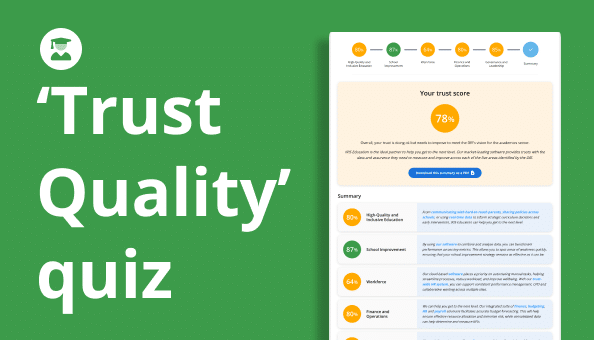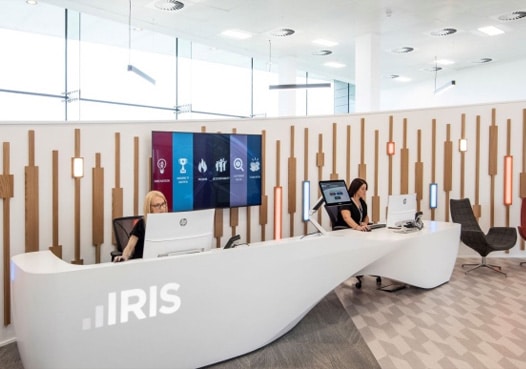BLOGS
Employer’s guide to grievances and disciplinaries

Grievances and disciplinaries are simply an unavoidable part of HR.
To be successful in HR, you absolutely need a comprehensive understanding of how to handle them effectively when they arise.
It’s increasingly common for disciplinaries to happen for the wrong reasons and for grievances to be handled incorrectly, often leaving employers in metaphorical hot water.
The last thing businesses and HR departments want is disgruntled employees, reputational damage or even financial penalties.
But what can businesses do to mitigate risk and ensure best practice? This is a question clients often ask our HR consulting division.
Well, look no further! I recently held a webinar on this topic that you can watch here or read my summary below!
What is a grievance?
In its most simple form, a grievance is a type of complaint made by an employee to their employer, which requests the employer to take action.
Grievances can relate to various issues (and often a lot more than one), such as working environment, wages, process failures or the treatment of an employee.
It normally takes multiple things to go wrong or a serious infraction for an employee to consider raising a grievance.
Usually, formal grievance complaints are submitted in writing when an issue can't be resolved informally, or if the complaint is serious enough, the employee may go straight to logging a formal grievance.
Note: your business must have a written grievance policy, detailing what employees should do if they wish to raise a grievance and what happens at each stage of the process.
After submitting a grievance, employers should hold a meeting with the employee to discuss the issue.
If the employee disagrees with the employer's decision, they can appeal.
This meeting should be fair and as impartial as possible; for example, you shouldn’t have an employee who has had the complaint made against them investigate the grievance concern.
Bear in mind that employees will often use the grievance process to raise items that are not strictly grievances.
Common items that are raised incorrectly via the grievance process are:
- Whistleblowing
- Accusations of fraudulent behaviour
- Accusations of corruption
Whilst these items could be dealt with in a company’s grievance process, they should have their own policies in place.
What are common employee grievances?
A few common employee grievance areas include:
- Misunderstandings or disputes over the terms and conditions of employment contracts – it is important that your business fully comprehends the terms and conditions of employment because if you can’t articulate them clearly, it often leads to further confusion for employees
- Formal complaints regarding discrimination related to any of the following characteristics as defined in the UK Equality Act 2010; age, disability, gender reassignment, marriage/civil partnership, pregnancy/maternity, race, religion/belief, sex and/or sexual orientation
- Negative impact on wellbeing and productivity due to bullying or harassment
- Concerns relating to health and safety practices
- Issues stemming from management styles or decisions
Generative AI and grievances
Prior to 2023, most grievances were written directly by the complainant (in most cases the employee)
With the AI revolution that we have been witnessing over the last 18 months, we are now seeing a rapidly rising trend where employees are using AI tools, such as Chat GPT and other Large Language Model (LLM) tools, to help them formulate their complaints.
The result is targeted and complex complaints which can be incredibly difficult to address for inexperienced HR Professionals or business leaders, leading to an increased amount of resources required to tackle these grievances.
Another big risk here is when an employee creates a grievance, they're often highly distressed or disgruntled about the issue and not aware of the sensitive information they're sharing; as such, employees may be typing highly sensitive company information into these AI tools, which could be a misconduct issue.
It is vital to evolve your policies in line with areas such as AI and LLM.
What should you look out for?
Grievances can really be any complaints that are formalised.
Typically, an employee telling another member of staff they're upset wouldn't be classed as a full grievance.
In your policy, it should be documented that you are asking employees to formally submit their grievances, whether that is a letter to the HR manager or an email to their line manager, for example.
This will help your business identify true complaints that need action.
To safeguard your business, you must establish within your workplace policy how staff should raise issues, ensuring everyone understands what's classified as "formal".
Top tip: ACAS, which is a Government-sponsored body, helps businesses with their workplace policies, offering a code of practice for you to follow – ideally your grievance and disciplinary policy should mirror the ACAS code of practice.
What happens if you get grievances wrong?
Getting the grievance procedures wrong creates the risk of creating a demotivated and disengaged employee, which can cause numerous issues in the workplace.
Notably reduced productively, not just with their own workstreams but also with the colleagues they interact with.
If they're seen as ambassadors or leaders in your business, it can damage your internal ecosystem if they are disgruntled.
Additionally, completely disregarding the ACAS guidance can often lead to higher settlements in an employee trial (if it goes there).
One of the riskiest things we see in the industry is constructive dismissal.
With constructive dismissal, if an employee raises a complaint that they are being mistreated in the workplace causing them to resign, they can then make claims against the business and pursue compensation.
Note: it’s highly recommended that you further research this topic or reach out to IRIS HR Consulting for guidance as it’s a very subjective area that carries a high amount of risk for your business.
What is a disciplinary?
Disciplinaries are procedures led by the employer involving employees, which address negative or unprofessional employee behaviour, typically known as employee misconduct.
They are also used to address concerns from the employer such as fraudulent behaviour.
Depending on the seriousness of the misconduct, the disciplinary can range from delivering a verbal warning to terminating employment.
Serious misconduct is typically defined as ‘gross misconduct’.
Disciplinary procedures are formal ways for employers to tackle workplace and employee issues.
It’s standard for these procedures to include a formal disciplinary hearing where the employee is given a chance to explain their side of the story.
The standard process normally looks like this:
- The employer identifies a misconduct concern
- The employer’s management investigates the concern and establishes the evidence of the proposed misconduct, this could include interviewing members of staff
- Once the employer has established the evidence of misconduct it must then make the decision to take further action or resolve the concern informally
- If the employer proceeds to take further formal action, it should then invite the employee to a disciplinary hearing, following the established disciplinary procedures and ensuring they have adhered to the ACAS code of practice
- The disciplinary hearing should be chaired (where possible) by a member of the employer’s management who didn’t complete the investigation to allow for an impartial decision to be reached
- The employer should reach a decision on the outcome and then present this outcome to the employee in writing, recording the outcome formally
- The employee then has the opportunity to appeal this decision following the company's appeals process.
What are common disciplinary issues?
A few common workplace disciplinary areas include:
- Persistent lateness or unauthorised absences
- Failure to meet job requirements
- Inappropriate use/theft of company assets
- Violations of company policies such as dress code, confidentiality agreements or social media guidelines
- Failure to follow lawful and reasonable instructions
- Acts of aggression
- Use of alcohol or drugs that impact job performance and/or safety
Note: you should have a policy that describes what misconduct looks like in your company.
When to use a disciplinary
Disciplinaries are truly the most formal step, and it's advised you always try to resolve these issues informally if you can.
If a solution can't be reached informally, the next step is to undertake an investigation, examining what the misconduct is, what policy has been breached and how to correct the situation.
What happens if you get a disciplinary wrong?
There can be varying consequences for your business if you get a disciplinary wrong.
Employment terminations that have been unfair or discriminatory can result in an employee tribunal which brings with it fines and damages your business' reputation.
We advise if you do decide a termination is required, consider offering a mutual separation agreement which acts as a contract that defines a financial settlement to waive the employee's right to raise a claim – it’s important that you seek professional advice on this topic.
What happens outside the UK?
If you have grievance and disciplinary policies, generally, they have standards that can be applied to other regions.
Aspects such as having investigations, being fair to the employee/employer and complying with local labour laws all apply.
Do note that cultural sensitivity and understanding can play a huge role in effectively navigating issues outside the UK.
Summary: defining the difference
The terms are often grouped together.
But ultimately, a grievance is an employee complaint while a disciplinary is an employer complaint.
Remember, if you're concerned, consult local labour laws to ensure you are compliant.
At IRIS, our team of HR consultants are always on-hand to support with any workplace challenges - learn more about IRIS HR Consulting here.













